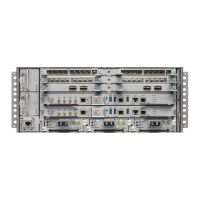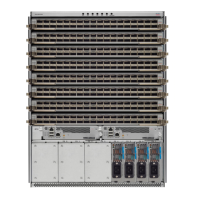SUMMARY STEPS
1. configure
2. interface type interface-path-id
3. Do one of the following:
• ipv4 address address mask
• ipv6 address ipv6-prefix / prefix-length [ eui-64 ]
• ipv6 address ipv6-address { / prefix-length | link-local }
• ipv6 enable
4. exit
5. router isis instance-id
6. net network-entity-title
7. address-family ipv6 [ unicast ]
8. single-topology
9. exit
10. interface type interface-path-id
11. circuit-type { level-1 | level-1-2 | level-2-only }
12. address-family { ipv4 | ipv6 } [ unicast ]
13. commit
14. show isis [ instance instance-id ] interface [ type interface-path-id ] [ detail ] [ level { 1 | 2 }]
15. show isis [ instance instance-id ] topology [ systemid system-id ] [ level { 1 | 2 }] [ summary
]
DETAILED STEPS
PurposeCommand or Action
configure
Step 1
Enters interface configuration mode.
interface type interface-path-id
Example:
Step 2
RP/0/RP0/CPU0:router(config)# interface
GigabitEthernet 0/1/0/3
Defines the IPv4 address for the interface. An IP address
is required on all interfaces in an area enabled for IS-IS if
any one interface is configured for IS-IS routing.
Do one of the following:
Step 3
• ipv4 address address mask
• ipv6 address ipv6-prefix / prefix-length [ eui-64 ]
or
• ipv6 address ipv6-address { / prefix-length |
link-local }
Specifies an IPv6 network assigned to the interface and
enables IPv6 processing on the interface with the eui-64
keyword.
• ipv6 enable
Example:
or
RP/0/RP0/CPU0:router(config-if)# ipv4 address
10.0.1.3 255.255.255.0
Specifies an IPv6 address assigned to the interface and
enables IPv6 processing on the interface with the
link-local keyword.
or
Routing Configuration Guide for Cisco NCS 6000 Series Routers, IOS XR Release 6.4.x
215
Implementing IS-IS
Configuring Single Topology for IS-IS

